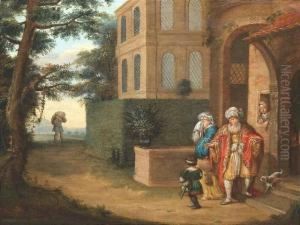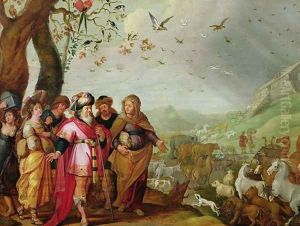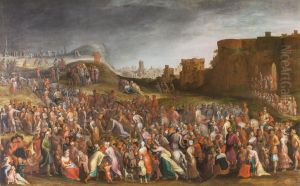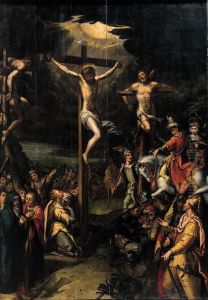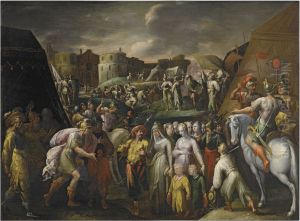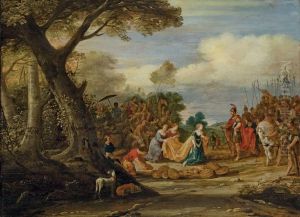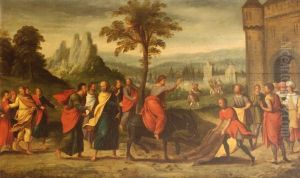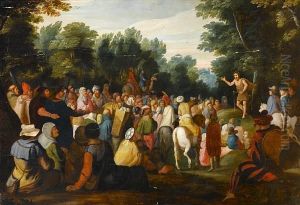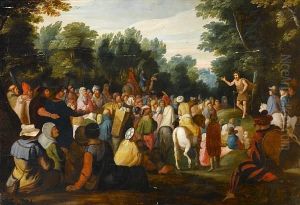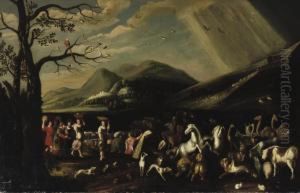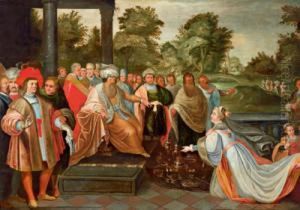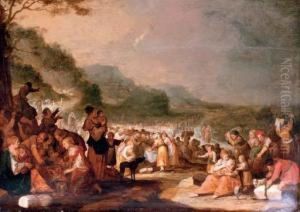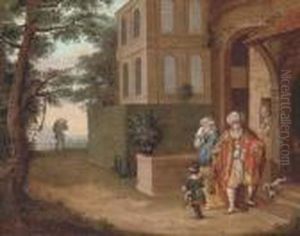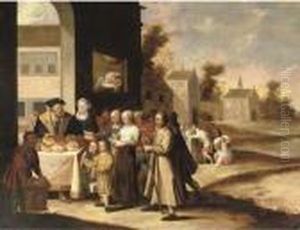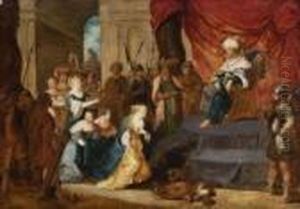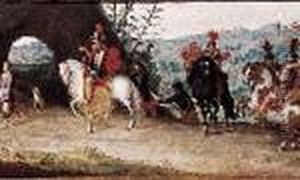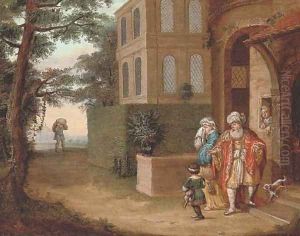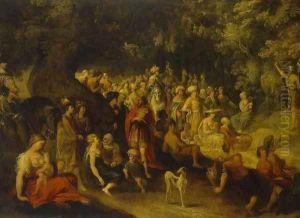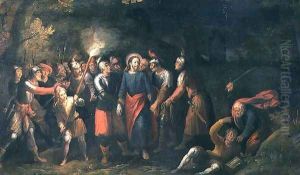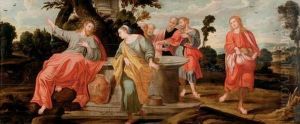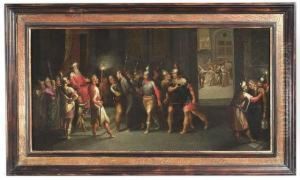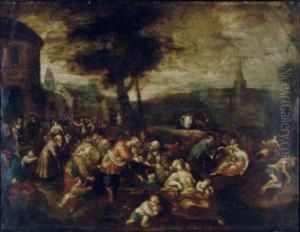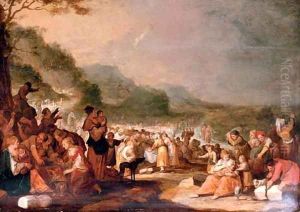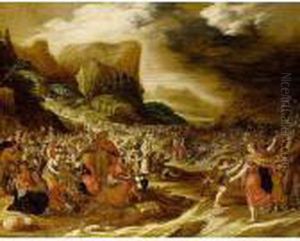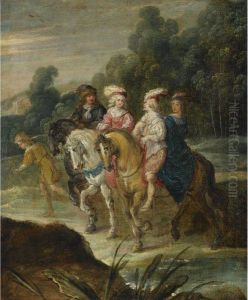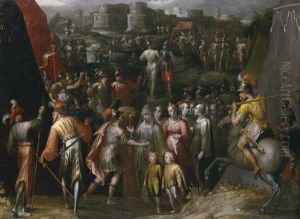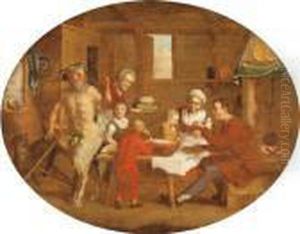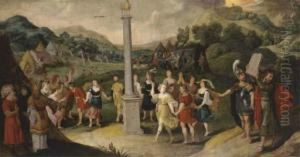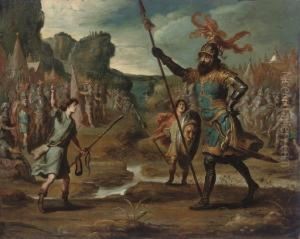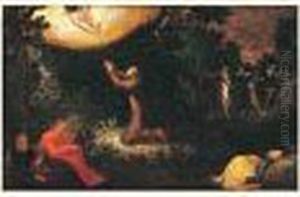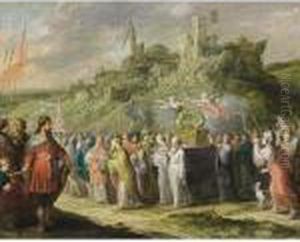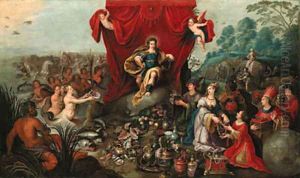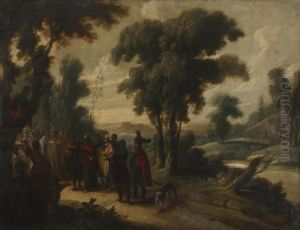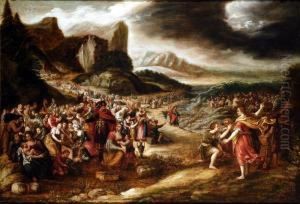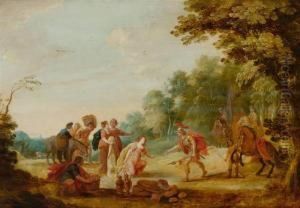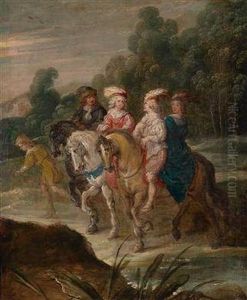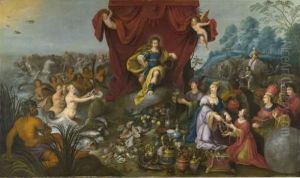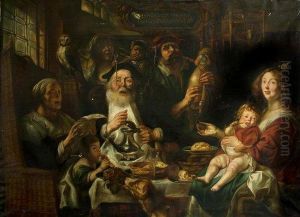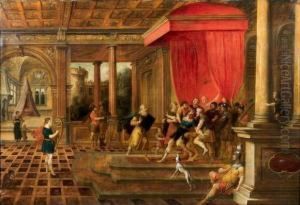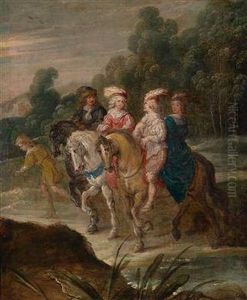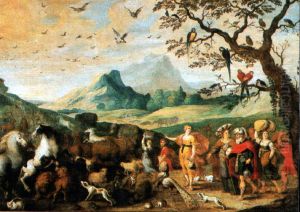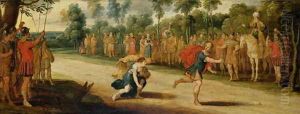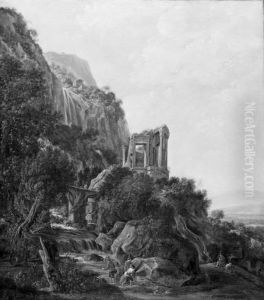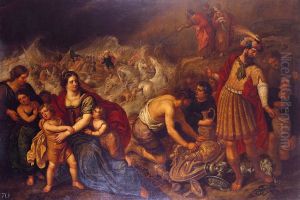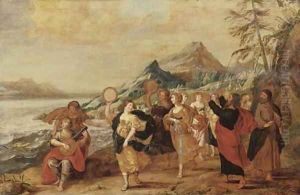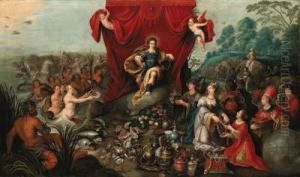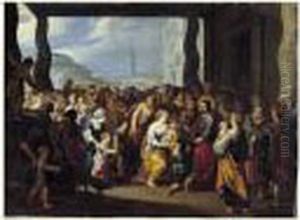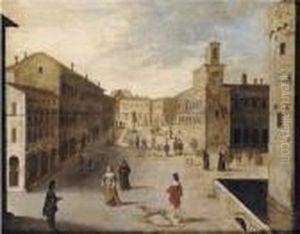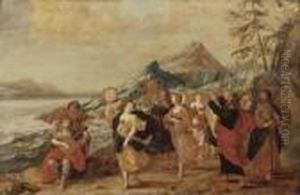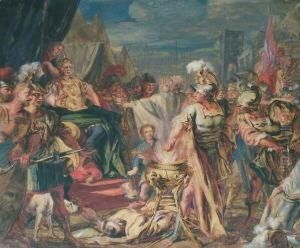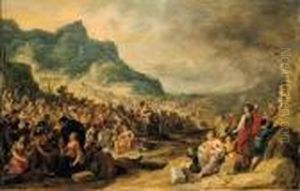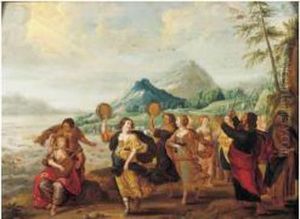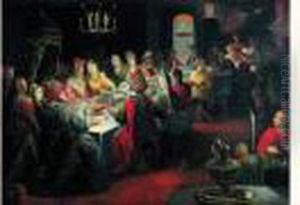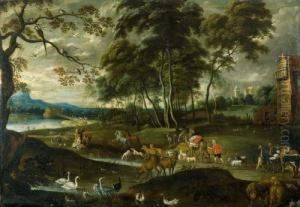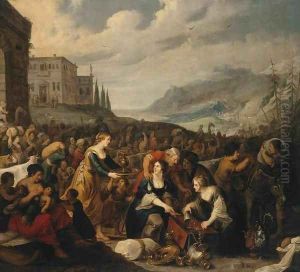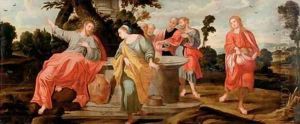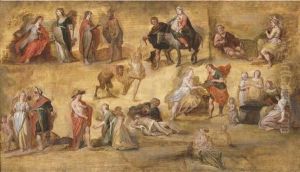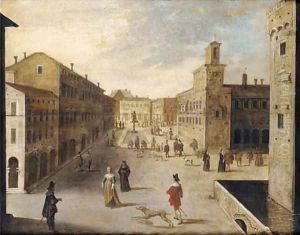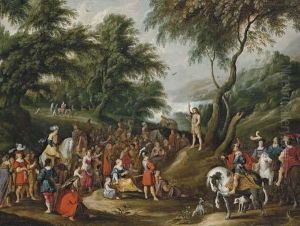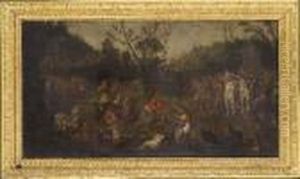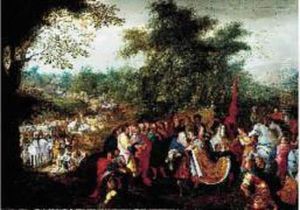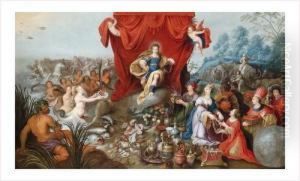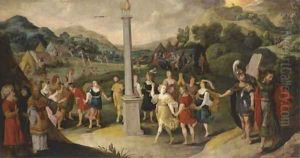Hans III Jordaens Paintings
Hans III Jordaens was a Flemish Baroque painter who lived during the late 16th and early 17th centuries. Born in Antwerp in 1590, he was part of a family of artists and is often confused with his more famous contemporary Jacob Jordaens, although they were not directly related. Hans III Jordaens' work is characterized by a robust, energetic style, with a focus on historical and mythological scenes, as well as religious subjects.
Jordaens received his artistic training in the workshop of a lesser-known painter before embarking on his career. His style was influenced by the great Flemish masters of his time, such as Peter Paul Rubens, and he was part of the artistic movement that was characterized by dynamic compositions, vibrant colors, and a dramatic use of light and shadow, features that are typical of the Baroque period.
Over the course of his career, Hans III Jordaens developed a reputation for his large-scale works and was commissioned to create altarpieces and frescoes for churches, as well as decorative schemes for the homes of wealthy patrons. He also produced a number of portraits, genre scenes, and landscapes, which were well-regarded for their lifelike detail and sense of immediacy.
Despite his talent, Hans III Jordaens did not achieve the same level of fame as Jacob Jordaens or his other contemporaries, and much of his work was later misattributed to other artists. This has made it difficult for art historians to fully assess his oeuvre and his contribution to Flemish art. He passed away in 1643, leaving behind a body of work that still awaits thorough scholarly examination.
Today, Hans III Jordaens' paintings can be found in various museums and private collections, offering a glimpse into the rich artistic heritage of the Baroque era in Flanders. His works are appreciated for their vigor and the skill with which he captured the essence of his time.
